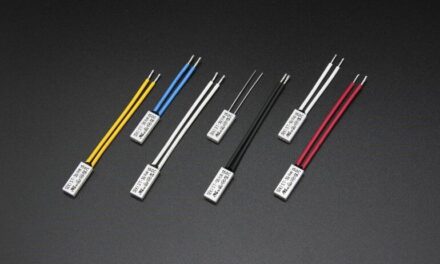 Compact design is one of today’s mantras when it comes to electronic devices. While this may be good news in terms of greater power density and better performance, the need to fit an increasing number of components within a tighter space poses a greater risk of thermal runaway. Thermal fuses are normally used to counter this risk, but these devices have their limitations. In this article, we will look at how combining thermal fuses and shunt resistors may offer an effective solution.
Compact design is one of today’s mantras when it comes to electronic devices. While this may be good news in terms of greater power density and better performance, the need to fit an increasing number of components within a tighter space poses a greater risk of thermal runaway. Thermal fuses are normally used to counter this risk, but these devices have their limitations. In this article, we will look at how combining thermal fuses and shunt resistors may offer an effective solution.
What is thermal runaway?
Thermal runaway occurs when an electronic device overheats, which is generally caused by heat-producing and self-energising processes. When it comes to power semiconductors such as MOSFETs, in connected status, the drain source forward resistance increases as temperature increases, resulting in greater power dissipation in the barrier layer. If cooling is insufficient, this power dissipation cannot be fully discharged, raising the forward resistance and making the process increasingly unstable. This can lead to the component or device being destroyed, and even cause fires or explosions.
The role of current measurement sensors
When engineers design components and circuits, they need to consider the temperature dependency of the component’s electrical resistance. Combining a thermal fuse with a current measurement sensor – in the form of a shunt – is an effective way of ensuring that current flow is kept in check. The thermal fuse will identify a creeping temperature increase while the shunt will identify a rapid onset malfunction (excess current).
A shunt is a low-ohm resistor with as low a temperature dependency as possible. This enables accurate measurements of the current flow inside the component without it being influenced by the ambient temperature. The resistor’s small voltage is measured to calculate the current intensity; the lower the voltage, the smaller the influence that the measuring device will have on the circuit. A controller processes the measurements and if the current is too high, it separates the circuit. The permitted current intensity depends on the system and can be configured accordingly.
Smart combination for fail-safe protection
Some of the latest safety fuse technologies provide functionalities that have not been available previously. The RTS is located as close as possible to the component it is protecting. In this way, the thermal fuse is able to separate the components from the circuit as soon as the power semiconductor’s ambient temperature exceeds a certain threshold.
If a thermal runaway is detected, galvanic separation occurs. Thanks to the addition of a shunt measuring resistor, it is now also possible to measure the extent of the current flow and correct it with control electronics.
Adding an overcurrent fuse to the RTS combines three functions (abnormal temperature protection, overcurrent protection and current intensity measurement) into a single reflow soldered SMD component. This setup enables significant space savings thanks to RTS housing with a footprint that can be as small as 6.6mm x 8.8mm. Costs are therefore reduced, while operational safety is greatly increased.
Standard and customised options for a wide range of applications
A design that combines RTS with a shunt is a great fit for the 12V power electronics in automotive applications, including cooling fans, ABS, servo steering, PTC heaters, HVAC, glow plugs and diesel heaters. It can also be deployed in industrial applications, particularly in battery protection, power adaptors, control-gear lighting, H-bridge circuits and motor drives. Besides the standard products, customised designs with adapted parameters (e.g. resistance level or tripping temperature) are also available to provide effective protection for individual needs.
For more information on Rutronik’s services and portfolio of products, click here.



